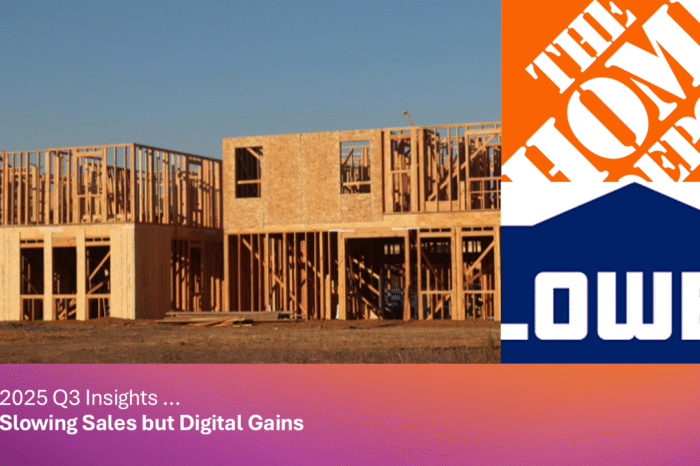Home Depot and WESCO … Yes there are Commonalities

Ever think that there could be commonalities between Home Depot and WESCO?
Recently Home Depot and WESCO released their 2020 10-K’s and/or participated in an Investor Conference so ElectricalTrends decided it may be interesting to take a read through to what additional we can learn. And interestingly, there are five commonalities!
Home Depot
Ever wonder how much Home Depot does in the electrical / lighting aisle? In 2020 it was reportedly $9.844 out of net sales of $110.225 billion, hence 8.93% of sales. This was down from 9.25% in 2019 and in preceding years it was 9.36%, 9.5%, 9.64% and 9.79%. Last year was a “down” year for the electrical / lighting aisle ($168 million). The percent decline is due to sales growth in other areas. Click here to see other categories.
From Home Depot’s presentation at the Raymond James Associates Institutional Investors Conference:
- Three years ago developed a plan based around changing customer expectations and anticipated a desire for an “interconnected shopping experience” (value of customer research).
- Increasingly customers, including pro, are starting their shopping journeys online. Pros are looking for inventory levels, price points and product specifications.
- Home Depot conducts focus groups with its Pro customers throughout the year (and can do this across trades) to gain a sense of the market, hence knows that pros have backlogs.
- Biggest issue Home Depot Pro customers have is skilled labor availability.
- Pro business is now 45% of Home Depot’s business (this presumably changes by product category.)
- HD Supply serves, in Home Depot’s view/ the “liveable spaces” segment of the MRO business such as mult-family housing, senior living, hotels, hospitals, etc. This space is a $55 billion market. Home Depot now has 10% market share in this space with HD Supply and what was formerly Interline Brands.
- Copper inflation doesn’t negatively impact Home Depot as they manage it on a weekly basis and they “mark to market” and are priced weekly, if not daily.
- Track customer usage of different capabilities (most likely, in aggregate and cohort groups, but could for some by individual) so can gauge engagement and infer other opportunities. (something distributors could consider with data going into a CRM system or similar.)
- Mentioned Milwaukee, Makita and DeWalt when talking about tool assortment and feel that engagement with tools speaks to long-term opportunities around projects for DIYers (which begs the question, what correlations could distributors consider?)
- Building facilities across US to enable anything and everything Home Depot slls to be delivered next day to 90% of the US population (could significantly impact the electrical contractor space – especially resi contractors and other small to medium contractors who don’t need “specialized” / technical services. This could be a major threat to other construction-oriented trades.)
- Online traffic grew 50% in 2020. Planning more investments in 2021.
WESCO
WESCO filed its 10-K with the SEC and spoke at the Raymond James conference.
First, from the Investors Conference:
Here’s a link to their slide presentation.
- Mission is focused on helping companies build (industrial and construction), connect (network), power (utility) and protect (safety).
- Seek to capitalize on secular trends of electrifications, data networking and remote connectivity
- Plan to leverage business insights through data science.
- State that they “outperformed” the market (perhaps in other segments, but, as mentioned from their Q4 report, didn’t appear to in the electrical distribution space.)
- Secular trends WESCO sees include:
- IoT and automation
- Remote Connectivity
- Supply Chain Relocations
- Connected Real Estate
- Increased Security
- Secure Networks
- Data Center Capacity
- Mobility and Accessibility
- Electrification (including EV’s and renewables)
- LED Adoption (which has been well underway)
- Communications
- Utility grid
- Electrical and Electronic Solutions segment, which is where most electrical distributors compete against WESCO, is 40% of WESCO’s business.
From WESCO’s 10-K:
- Employs nearly 18,000 employees (12,000 in US) and serves over 125,000 customers worldwide.
- Top 10 customers represent 12% of sales
- Almost 800 branches, warehouses and sales offices in over 50 countries. 700 are branches / warehouses that hold inventory. 8% of facilities are owned.
- Top 10 suppliers are 30% of purchases
- Nearly 60% of purchases come from 350+ suppliers whom WESCO has “commercial agreements” (rebates)
- EES segment (electrical) is in 40 countries
- 6 planks to strategic plan
- Digital solutions – customer segment specific
- Commercial excellence – leverage data, tools and training to manage sales opportunities and customer service
- Operational excellence – use scale and technology to unlock efficiencies in the supply chain
- Technology platform – digitize the business
- Organization, Talent and Culture
- Portfolio and Strategic Mergers & Acquisitions – continue to make acquisitions
- Company has a Silicon Valley innovation center (which begs the question of what are most distributors and suppliers investing into their business for “innovation” or consider this pilot initiatives or an internal venture capital fund. Do you reward innovation and embrace risk taking?)
- 2020 gross profit margin was 18.9%, overall, in 2019 and 2020.
- SG&A in 2020 was 15.1%
- 75% of WESCO’s debt portfolio is comprised of fixed rate debt (which will help the company increase net cash flow in the next few years.)
- Receivables under the supplier rebate program were $136.7 million in 2020 and $81.6 million in 2019. As a percent of net sales this was 1.1% in 2020, 1.2% in 2019 and 1.3% in 2018. (this would be tough for an electrical distributor to compare given WESCO’s global diversification and various businesses – Network and Utility – where rebates are much less, if they are even available.)
Observations
While different businesses there are commonalities. Both are …
- Investing in eCommerce / digital customer solutions
- Digitizing their operations to improve efficiencies in their supply chain
- Utilizing data analytics
- Growing through acquisition (while Home Depot also growing organically)
- Seeing secular / customer trends and executing upon strategies to capitalize upon them
The question is, “are you?” Through insight and investment, you can control your destiny.























